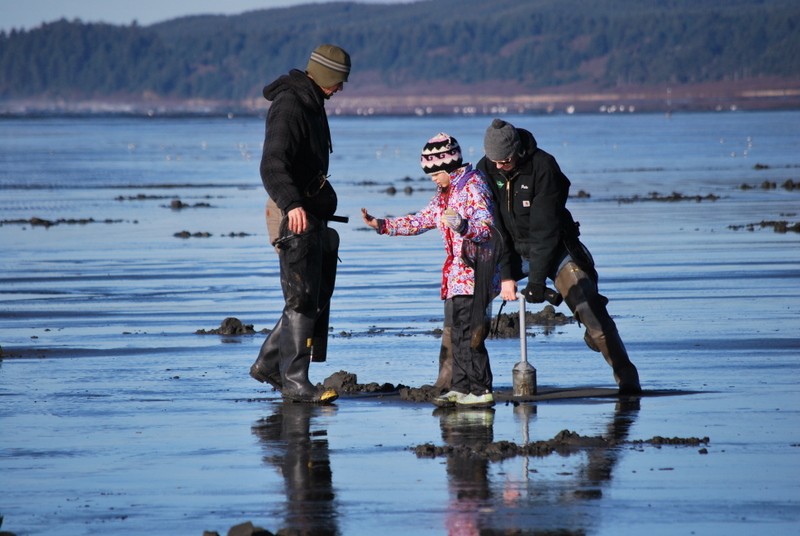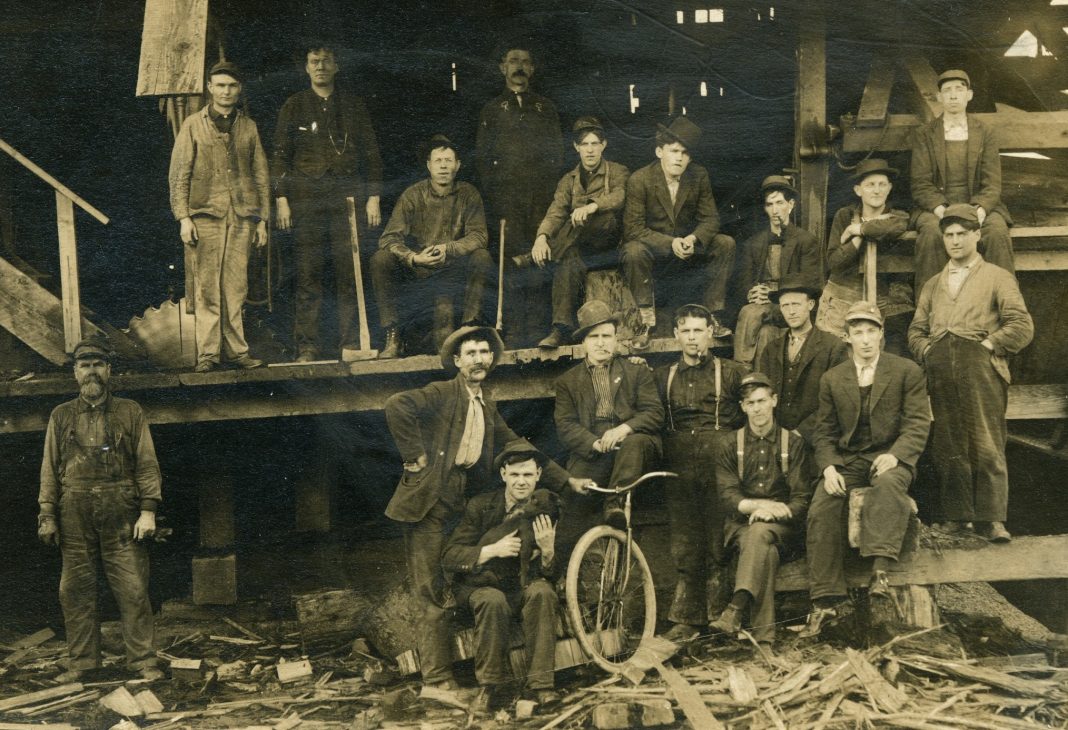Submitted by Lanny Weaver for the Lacey’s 50th Anniversary Committee
Read Part 1 of this article series here.
The Woodland Driving Park racetrack had brought the railroad, a hotel and a post office to the community of Woodland in 1891. Unfortunately for a succession of owners, with rare exception, it did not bring success. Yet these changes improved access to the community. The Thurston County Commission approved more local roads starting in the 1890s, such as Carpenter Road. In 1896 they also agreed with 33 petitioners that Woodland deserved its own voting precinct separate from Chambers Prairie.
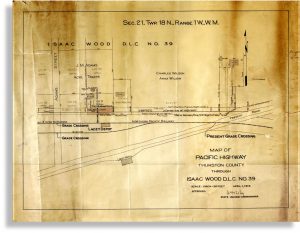
Courtesy of the Lacey Museum
Olympia city fathers, still seeing Woodland as an extension of their fair city, convinced the Benedictine Brothers to build their college along the Olympia-Steilacoom Road, using accessibility as one argument. Saint Martin’s College opened in 1895. Just a few years earlier and a little to the east, the Woodland School District purchased property for the first time for a schoolhouse and in 1901 a new wing was added. With a growing community population of 600 in 1913, the district replaced it with a four room school. Despite additions, the school wasn’t large enough to hold the influx of new students from the consolidation of school districts and the Children’s Farm Home (founded in 1926 by the Washington Juvenile Protective Society on the Woodland farm property), so the district added yet another four room structure in 1928.
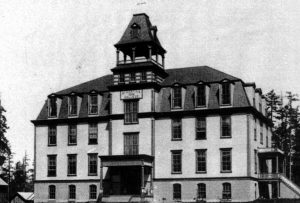
Courtesy of the Lacey Museum
Students also came from the Union Mills area. The Long Lake Mill, an operation begun in 1896, changed its name to the Union Lumber Company in 1899. By 1909 the mill employed 150 people. After a fire laid waste to several of the buildings that same year, the company rebuilt the facility, making it the first mill operation in the United States to be run entirely by electricity.
Saint Martin’s had become a fixture in the community, growing enough to have to replace the original “Old Main” with a new building in 1913. Father Sebastian Ruth brought further attention to the campus in 1922 when he was awarded the call letters “KGY” for the radio station he had started.
A new era began for the Lacey area shortly after 1910 when Frank Mullen opened up his property on Pattison Lake to visitors, eventually creating a resort which offered swimming, boating and cabins for rent. Soon nearby Pattison Lake property owners and those on the other lakes (Hicks, Long and Southwick) followed suit.
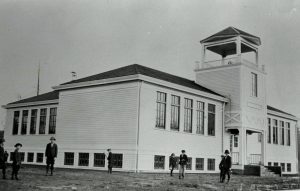
Courtesy of the Lacey Museum
In 1917, the Olympia Golf and Country Club took over a portion of the old David Chambers Donation Land Claim. Although Lacey had become a summer resort destination and obviously, it was growing, but in the eyes of one Hicks relative, who used to visit Gwinwood on Hicks Lake, Lacey was still just “a wide spot in the road.”
Polk City Directories from the early 20th century seem to confirm her estimation. The main profession noted for Lacey residents centered on agriculture, in particular berry, poultry and dairy farming. The timber industry also ranked high because of Union Mills.
The appearance of Lacey, however, did change gradually. A store opened on the extension of Adams (Bowker) Street, replacing the Carpenter store. By 1915, Pacific Avenue was completed, thus eliminating the need for traffic cross railroad tracks twice in a short distance along the highway from Olympia north.
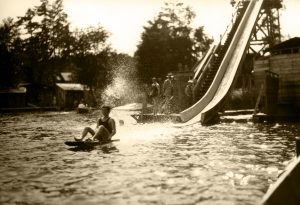
Courtesy of the Lacey Museum
The Fleetwoods and the Russells purchased property along Pacific Avenue in 1920. Eventually the Fleetwoods opened a garage and the Russell family a confectionary. William Ulery added a restaurant and gas station to his property on the corner of Carpenter Road and Pacific in 1925. Gordon Foy moved a store from Adams Street to the corner of Pacific and Lacey Street in 1929.
Adams Acre Tracts, a one street subdivision, had been platted in 1890. It took until 1927 for the adjacent subdivision, Lacey Villas, to appear. Both are now part of the Lacey historical neighborhood. Other Lacey plats with names such as Fleetwood Acres, the Hagen Subdivision and the New State Addition started to dot the area.
More than just appearance changed for Lacey from 1892 to 1948. The community name Woodland gradually disappeared. The post office had taken the name Lacey in 1891. The train depot changed its name to Lacey in 1902 and the school in 1908, leaving only the voting precinct with the name Woodland. In a petition to the Thurston County Commissioners for a change of name to the precinct, the residents explained “The reason for the change is that no such place as Woodland now exists in Thurston County.” By the 1924 election, the last vestige of Woodland had gone; the precinct name was now Lacey.
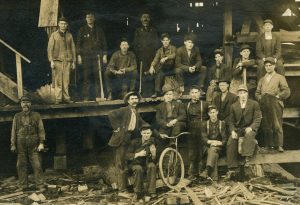
Courtesy of the Lacey Museum
At the beginning of the time period, the residents of Lacey seemed to be content to be an extension of Olympia. Like most Thurston County high school students, the students from Lacey went to Olympia High School. Olympia remained a destination for shopping and entertainment. But it couldn’t provide all the services this burgeoning community needed. Two disastrous fires in early 1948 prompted the residents to form a volunteer fire department starting in June. By July, they had raised enough money to buy a fire truck and plans were underway to form a fire district. It was just one small step for the community, but it would turn out to be the beginning of a giant leap toward becoming a city.
Read Part 1 of this article series here.
Partial List of Sources of Information:
Washington State Archives, Southwest Regional Branch:
Thurston County Auditor, Election Record, 1924
Thurston County Auditor, Deeds, 1892-1948
Thurston County Commissioners, Proceedings, 1891-1948
ESD 113, Annual Report of the Thurston County School Superintendent, 1910
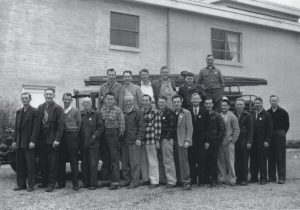
Courtesy of the Lacey Museum
Newspapers:
The Olympian, Jan. 8, 1948, Apr. 8, 1948, June 3, 1948 and July 1, 1948
Publications:
Scott, John C., O.S.B., This Place Called St. Martin’s 1895-1995. Virginia Beach: The Donning Co. Publishers, 1997, p. 24
Oral History (Lacey Museum):
Corinne Underwood Palmer, 1993






























